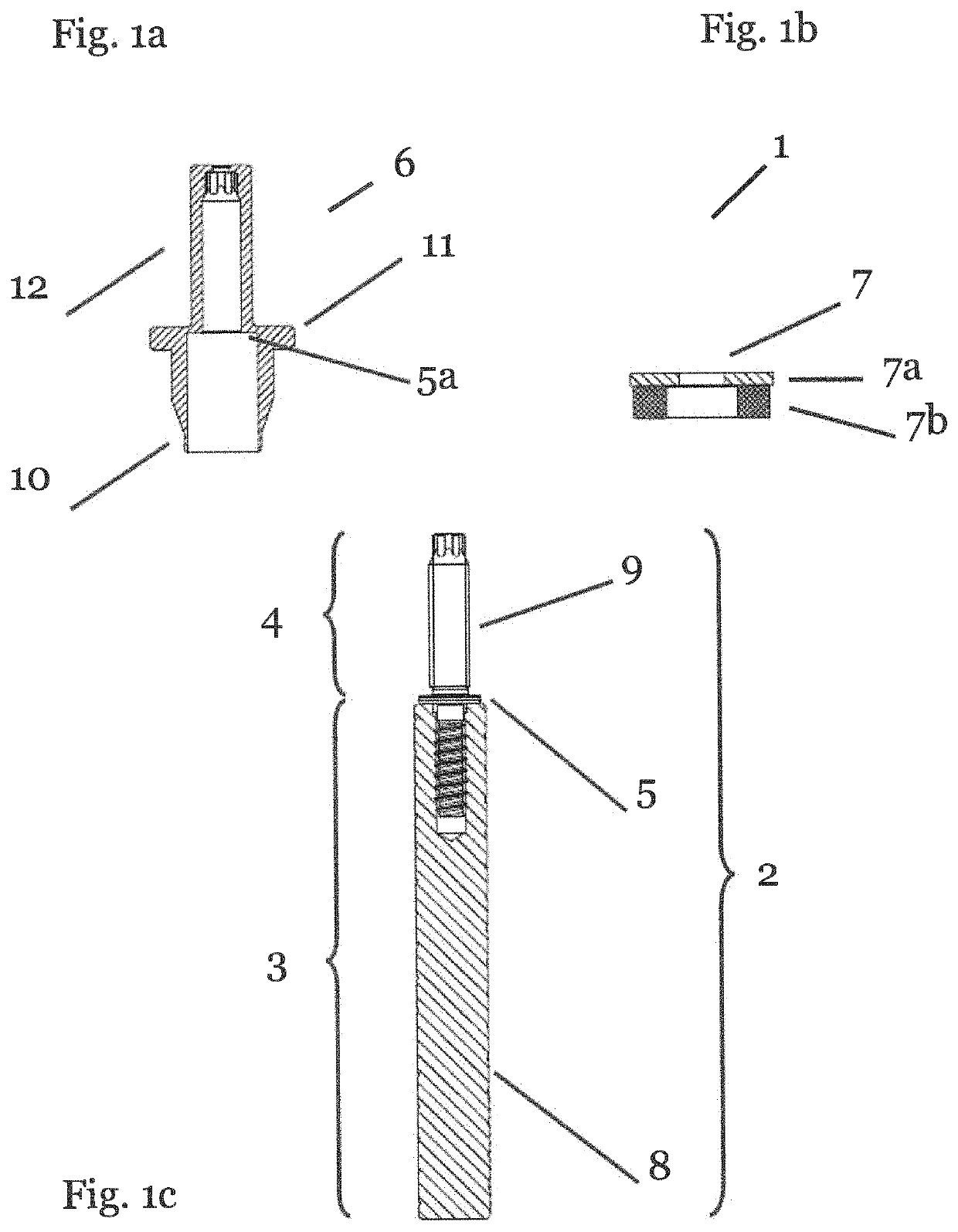System for fastening attachments to a substrate with an insulation layer
a technology of substrate and attachment, applied in the direction of heat-proofing, hinges, door/window fittings, etc., can solve the problems of unsightly insulation layer in the outer wall, more difficult to fasten heavy attachments, etc., and achieve the effect of simple means and better holding
- Summary
- Abstract
- Description
- Claims
- Application Information
AI Technical Summary
Benefits of technology
Problems solved by technology
Method used
Image
Examples
Embodiment Construction
[0022]FIG. 1 shows an exemplary embodiment of the fastening system 1 according to the invention. This fastening system 1 has at least three elements, an anchor bolt 2, a mounting tool 6 and a sealing element 7.
[0023]According to the invention, the anchor bolt 2 has two areas. A first area 3 provides the anchoring in a substrate. In the embodiment shown in FIG. 1, this first area 3 is formed by a plastic rod 8. This plastic rod 8 is pushed into a borehole in which, for example, an adhesive is located and with the adhesive the plastic rod 8 and thus the entire fastening system 1 is anchored in the borehole. The anchor bolt 2 also has a second area 4 to which an attachment can be fastened. In the embodiment shown in FIG. 1, the second area 4 is formed by a metal bolt 9. In this embodiment, the metal bolt 9 has an external thread, to which the attachment can be fastened with the aid of a nut, for example. In addition, the external thread can also be used to attach the sealing element 7 ...
PUM
| Property | Measurement | Unit |
|---|---|---|
| distance | aaaaa | aaaaa |
| area | aaaaa | aaaaa |
| flexible | aaaaa | aaaaa |
Abstract
Description
Claims
Application Information
 Login to View More
Login to View More - R&D
- Intellectual Property
- Life Sciences
- Materials
- Tech Scout
- Unparalleled Data Quality
- Higher Quality Content
- 60% Fewer Hallucinations
Browse by: Latest US Patents, China's latest patents, Technical Efficacy Thesaurus, Application Domain, Technology Topic, Popular Technical Reports.
© 2025 PatSnap. All rights reserved.Legal|Privacy policy|Modern Slavery Act Transparency Statement|Sitemap|About US| Contact US: help@patsnap.com


